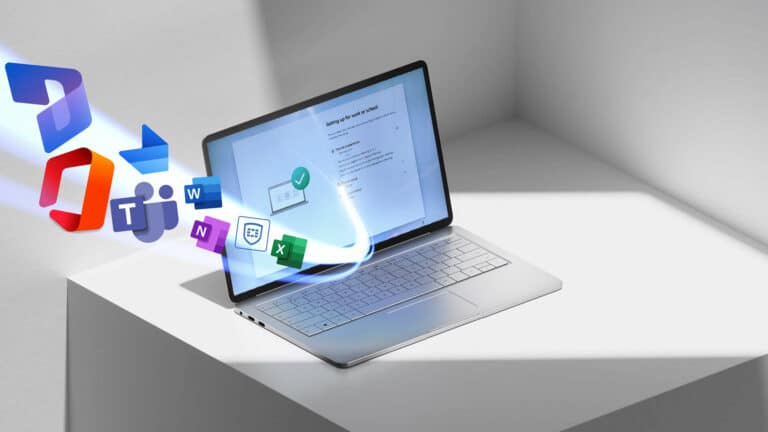New way of working together
The importance of Microsoft Teams It is clear that we no longer work in one fixed team. We increasingly work together with multiple groups of people or teams. This can be a department within the company or a project team with team members from different organisations.
Small, temporary teams are put together to achieve a specific goal in the short term, such as Sprint teams. In order to save expensive, time-consuming travel, we use (or used) Skype for Business, but sharing or collaborating on documents was an important pain.
Microsoft Teams: endlessly applicable
With Teams, Microsoft offers a reliable online platform for chatting, calling and conferencing. The philosophy behind it is to increase the productivity of organisations by simplifying communication and collaboration.
By launching Teams, Microsoft puts an end to the fragmented use of all kinds of different tools and each new team in Teams automatically has a common OneNote, SharePoint and Planner. Notes and documentation related to a project can be easily stored and consulted or edited as part of a team. Naturally, the integration with the standard Office 365 applications such as Word, Excel and PowerPoint is optimal, and it is also very easy to share a presentation or results sheet during an online meeting, just as in the past with Skype for Business.
Microsoft Teams vs Skype for Business
Teams will be positioned as the central communication hub within Office 365. To show that it is not just a replacement for Skype for Business, we made the following comparison:
Skype for Business |
Microsoft Teams |
|
| Chat (Instant Messaging) | ||
| Chat with individuals or in group | ||
| Calling contacts (picture & sound) | ||
| Share files | ||
| Contact person is online | ||
| Contact is offline | ||
| Meetings | ||
| Scheduling online meetings from Outlook | ||
| Desktop sharing during meeting | ||
| Chat before, during and after the meeting | ||
| People or groups tagging in a conversation | ||
| Like comments | ||
| Blur the background | ||
| Collaborate | ||
| Shared file editing (Word, Excel or PowerPoint) |
||
| Making notes during the meeting (OneNote) | ||
| Creating and monitoring tasks (Planner) | ||
| Retrieve shared documents (SharePoint) | ||
| Mobile | ||
| Calling, chatting and conferencing via mobile |
Switching to Teams? Don't forget your users!
At this moment Microsoft has no plans to stop Skype for Business in the short term. The support remains, only no (or only limited) new features will be added, so making the switch to Teams seems to us to be the best move anyway.
Please note: successful migration is only possible by paying attention to the involvement and training of the end users during the implementation of 100% (User AdoptionChange means resistance. Avoid the Digital User Gap and make sure everyone's with you in your company!
Find out more!
Ask for advice from our modern workplace specialists.
share this post:











